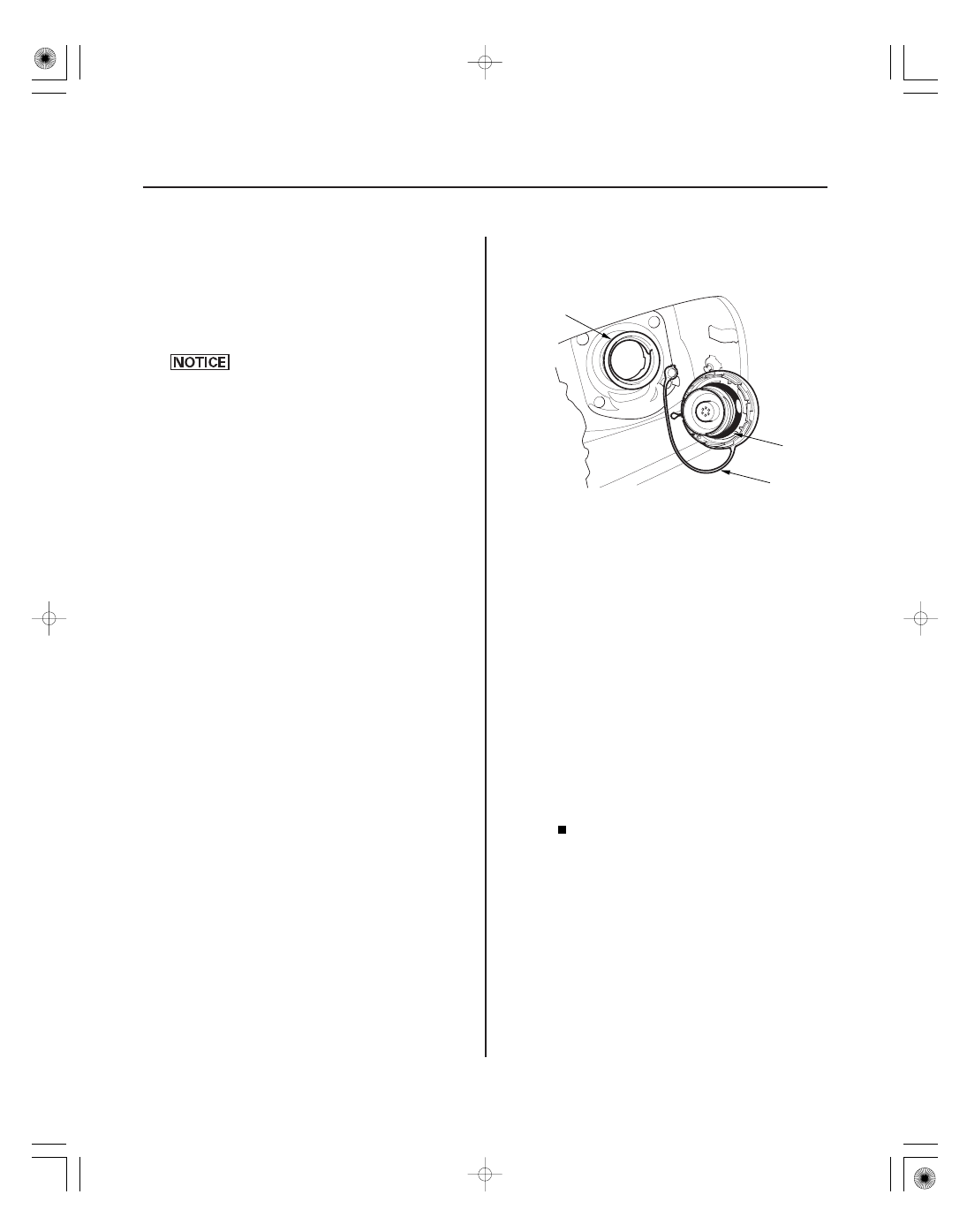Acura RSX Honda Integra. Manual - part 179

−
−
01
S6M6AALK72100090442FAAT00
−
−
−
−
−
−
DTC P0442:
DTC P0456:
Special Tools Required
YES
NO
YES
NO
YES
NO
11-422
EVAP System
DTC Troubleshooting
A
B
C
EVAP System Small Leak
Detected
(2005-2006 models)
EVAP System Very Small Leak
Detected
(2005-2006 models)
The fuel system is designed to allow specified
maximum vacuum and pressure conditions. Do not
deviate from the vacuum and pressure tests as
indicated in these procedures. Excessive pressure/
vacuum would damage the EVAP components or
cause eventual fuel tank failure.
• Vacuum/pressure gauge, 0
4 in.Hg, 07JAZ-001000B
• Vacuum pump/gauge, 0
30 in.Hg, Snap-on YA4000A
or equivalent, commercially available
NOTE: Fresh fuel has a higher volatility that will create
greater pressure/vacuum. The optimum condition for
testing is less than a full tank of fresh fuel. If possible, to
assist in leak detection, add 1 gallon of fresh fuel to the
tank (as long as it will not fill the tank) just before
starting these procedures.
1. Check the fuel fill cap (the cap must say ‘‘Tighten
click’’). It should turn 1/4 turn after it’s tight, then it
clicks.
Go to step 2.
Replace or tighten the cap, then go to step 22.
2. Check the fuel fill cap seal (A) and the fuel fill pipe
mating surface (B). Verify that the fuel fill cap tether
cord (C) is not caught under the cap.
Replace the fuel fill cap or the fuel fill pipe,
then go to step 22.
Go to step 3.
3. Turn the ignition switch ON (II).
4. Clear the DTC with the HDS.
5. Do the EVAP FUNCTION TEST in the INSPECTION
MENU with the HDS.
Intermittent failure, system is OK at this time.
Check for poor connections or loose terminals at
the FTP sensor, the EVAP canister purge valve, or
the EVAP canister vent shut valve and the ECM/
PCM.
Go to step 6.
6. Turn the ignition switch OFF.
7. Turn the ignition switch ON (II).
Is the cor r ect f uel f ill cap installed and pr oper ly
tightened?
Is the f uel f ill cap seal missing or damaged, is the
f uel f ill pipe damaged, or is the tether cor d caught
under the cap?
Is the r esult OK ?
05/06/27 17:43:11 61S6M040_110_0422